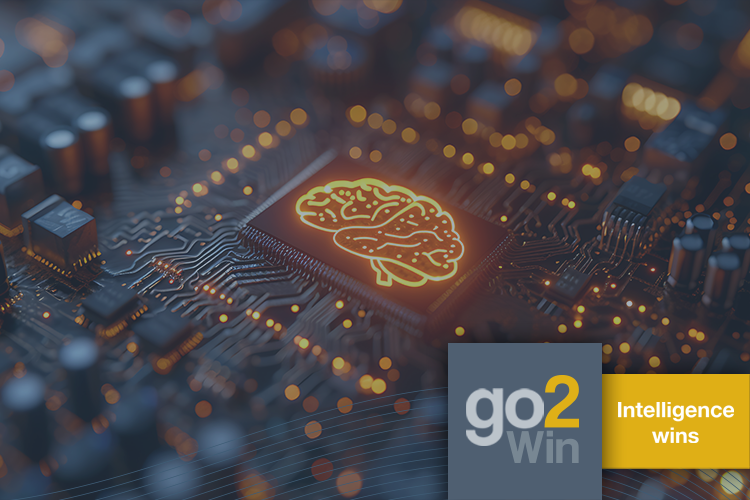The concept of augmented analytics refers to the use of advanced technologies, such as Artificial Intelligence (AI), machine learning (ML) and natural language processing (NLP), to improve the entire data analysis process. According to Gartner, “augmented analytics is the use of enabling technologies, such as machine learning and AI, to assist in data preparation, information generation and explanation to enhance the way people explore and analyze data in analytics and business intelligence platforms .”
In other words, this means that augmented analytics automates the collection, preparation and analysis of data to quickly generate valuable and actionable insights. Its greatest differentiator, however, is its ability to democratize data analysis, allowing professionals from different areas — even those without technical training — to detect patterns, identify relevant trends and use information strategically to support decisions with greater precision and assertiveness . It is, therefore, about transforming a once complex process into something simple — and accessible.
How Augmented Analytics Works
The Augmented Analytics process is carried out in three main steps:
- Data collection and preparation
The use of technologies such as AI and ML allows the automation of the integration of multiple data sources, in addition to ensuring their quality and consistency. Advanced algorithms, in turn, detect discrepancies, eliminate duplications and structure this data efficiently, enabling more in-depth analyses.
- Automated analysis
ML algorithms identify patterns, anomalies, and trends in data, providing insights generated autonomously and, often, in real time — thus enabling more agile and assertive decision-making.
- Presentation and interpretation of insights
Augmented analytics translates, through NLP, complex data into simple narratives and intuitive visuals such as interactive graphs and dashboards, facilitating the understanding of insights and providing the necessary support to enable data-structured decision-making.
Benefits
Among the many benefits that augmented analytics provides, we can mention:
- Increased productivity
Automation significantly reduces the time spent collecting and preparing data, allowing analysts and managers to focus their efforts on decision-making — and other strategic activities. - Model building
In traditional data analysis methods, variable selection relies on the manual work of data scientists, who create models based on their specialized knowledge. With augmented analytics , however, this process is automated by machine learning (ML) algorithms that analyze data accurately and efficiently, saving time and reducing human error.
- Data preparation
Augmented analytics automates data preparation steps such as cleaning, integration, and organization, which are typically time-consuming and resource-intensive. In other words, in addition to reducing operational costs, this automation also allows insights to be generated more quickly.
- Democratizing access to data
By presenting insights in a simple way, augmented analytics breaks down technical barriers — and allows professionals from all areas and departments to understand and use strategic information. - Agility and assertiveness in decision making
Real-time analytics and predictive insights are essential because they allow businesses to anticipate trends and react quickly to changes in the market — and consumer preferences.
- Elimination of human bias
The objectivity of the analysis performed by AI algorithms significantly minimizes the errors that may arise due to biased interpretations or mistaken assumptions.
- Scalability
As businesses expand their operations, augmented analytics adapts to the exponential growth in data volume and complexity, maintaining accurate analysis and enabling strategic decisions to be made quickly — regardless of the size of the business.
Use cases
Several sectors have been benefiting greatly from augmented analytics. For example:
Retail
Predictions about consumption patterns, personalization of marketing campaigns and inventory optimization. For example, augmented analytics tools can identify products that sell best at certain times of the year and suggest effective pricing strategies to maximize profits.
Health
Predictions about disease outbreaks, personalization of treatments and optimization of hospital resources. The insights obtained through augmented analytics can help hospitals anticipate peaks in occupancy and, therefore, adequately plan the allocation of teams, beds and essential supplies to ensure efficient care.
Finances
Fraud detection, forecasting economic trends and improving risk management. Banks and other financial institutions can, for example, use insights gained through augmented analytics to identify suspicious transactions in real time.
Human Resources
Predict employee retention rates and identify skills gaps — and improve recruitment and selection processes.
Logistics
Augmented analytics is extremely useful for tracking shipments, optimizing routes and forecasting demands, which are fundamental aspects for reducing operational costs and increasing efficiency in the logistics sector.
Challenges
Although augmented analytics provides several benefits to companies in all segments, its implementation presents some challenges, such as:
- Data quality : For the insights generated to be accurate and reliable, the data needs to be consistent, complete and up-to-date. Data quality is therefore crucial for effective analysis — but this is only possible through meticulous management, which includes validation, cleansing and integration processes. Otherwise, the results can compromise strategic decisions and generate significant risks for the business.
- Cultural adaptation : integrating the approach into the corporate environment requires a change in the mindset of employees and leaders, promoting a data-driven organizational culture in which decisions are based on concrete analyses. It is worth noting that this transformation encourages collaboration among professionals and, consequently, has a positive impact on the company’s results.
- Initial cost : Implementing advanced augmented analytics tools can require significant investment in technological infrastructure and software licenses, for example. This aspect, it is worth noting, is especially challenging for small and medium-sized organizations, which often need to balance budget constraints with the need for innovation. However, despite the high initial cost, benefits such as reduced errors, increased efficiency and generation of strategic insights can compensate for such investment — provided, however, that there is careful planning aligned with business priorities.
- Training : While the approach is designed to be accessible to all employees, some teams need to be trained and empowered to take full advantage of all the features available. Even though interfaces are becoming increasingly intuitive, certain areas of the process—such as interpreting advanced insights, adjusting analytical models, or configuring specific parameters—still require technical expertise. In addition, it is essential that teams responsible for strategic decisions understand how to align analysis results with organizational goals to ensure that the insights generated are applied effectively—and bring real benefits to the business.
Augmented analytics trends
Among the trends that will shape the future of augmented analytics, the following stand out:
- Expansion of Generative AI (GenAI)
The advancement of generative AI (GenAI) is redefining the way analytics are performed, enabling more detailed results and highly personalized decisions. This branch of traditional AI creates predictive models and analytical narratives based on large volumes of data, adapting to the specific needs of each business or context. In addition, it enables the creation of automated solutions that simplify complex tasks, such as scenario forecasting and generating strategic recommendations.
- Integration with IoT (Internet of Things)
The combination of augmented analytics with devices connected by the Internet of Things (IoT) is transforming the way data is collected, analyzed and applied. Devices such as wearables , industrial sensors and virtual assistants provide instant information that, when analyzed by augmented analytics tools, generate more comprehensive and accurate insights. This integration makes it possible to monitor industrial processes in real time, predict equipment failures, personalize services and even establish an intelligent ecosystem in which decisions are made proactively and strategically.
- Focus on sustainability
The insights generated by augmented analytics tools offer powerful support for reducing environmental impacts, as they help organizations identify opportunities to optimize the use of natural resources, reduce carbon emissions, and improve the energy efficiency of operations and processes. In addition, by combining data from different sources, it also enables the development of effective strategies aligned with ESG (environmental, social, and governance) goals, reinforcing companies’ commitment to sustainability.
- Insights customization
Advances in augmented analytics technologies allow analyses to be tailored to the preferences and needs of each department, team or user. This makes it possible to offer highly relevant and personalized insights, ensuring that business areas have access to tailored information to maximize the effectiveness of their decisions and actions.
Conclusion: The future will be (already is) data-driven
It is no exaggeration to say that augmented analytics establishes new paradigms in the way organizations use data to make strategic decisions. By integrating advanced technologies such as AI and ML, among others, this approach democratizes access to information, transforming the complexity of data into actionable and accessible insights . It is worth highlighting that this characteristic reinforces the importance of making decisions quickly and assertively — a crucial factor for companies in all segments to adapt to new scenarios and, thus, maintain their competitiveness in increasingly dynamic and constantly changing markets.

